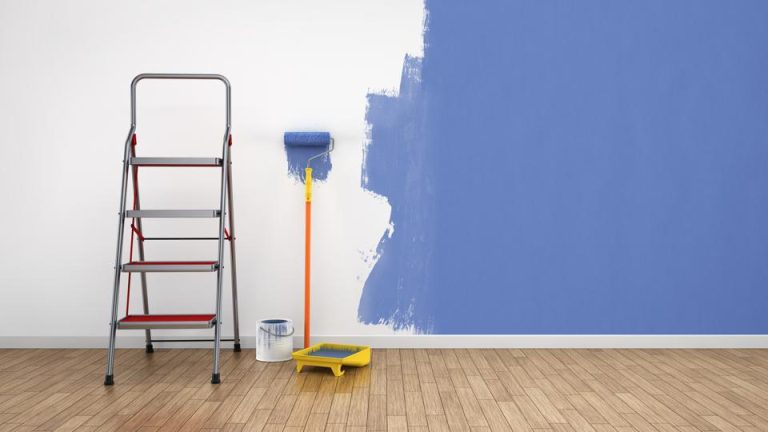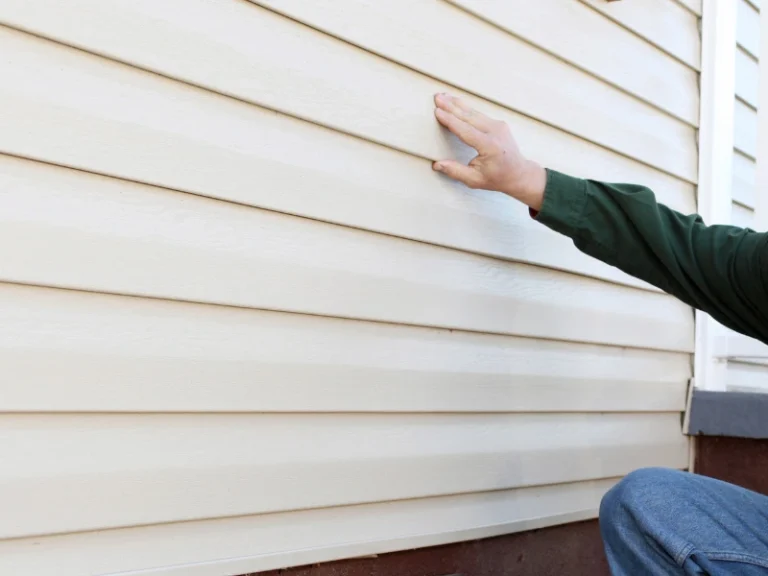How to Combine Tile and Wood Flooring? [Step by Step Guide]
A home is not merely an assembly of bricks and mortar but rather a vivid canvas that reflects your aesthetic sensibilities and personal style. This conviction especially holds true when it comes to flooring choices. Enter the charismatic union of tile and wood flooring! An uncommon pairing that exudes sophistication and warmth, effortlessly blending practicality with finesse. This article delves into the art of “How to Combine Tile and Wood Flooring?”. Keep reading!
The Rationale: Why Combine Tile and Wood Flooring?

Why bother mixing two different flooring types, you might wonder? The answer lies in the unique advantages that each material brings to the table. Wood, with its natural warmth, grain patterns, and ease of maintenance, offers a timeless charm. Tile, on the other hand, boasts superior durability, moisture resistance, and a wide array of styles to choose from. By pairing these two, you essentially get the best of both worlds, opening up a world of design possibilities while ensuring a durable, functional, and attractive floor surface.
The Blueprint: Creating a Vision for Your Combined Flooring

Before you start purchasing materials and swinging hammers, it’s essential to visualize your design. Sketch out the layout of your room and experiment with different placements of tile and wood. Consider practical aspects as well as aesthetic ones; for example, tile might be better suited for areas with high moisture, like kitchens and bathrooms, while wood may bring a cozy, warm feel to living areas and bedrooms.
A Seamless Affair: Transitioning Between Tile and Wood Floors

An important factor in successful wood and tile floor integration is the transition. The goal is to make the transition from tile to wood as seamless and natural as possible. An abrupt change can be jarring to the eye and detract from the overall aesthetic. There are several ways to make the transition smoother:
- Threshold Strip: A simple and effective solution is to install a threshold strip between the two floorings. This can be made from a variety of materials, including wood or metal, and can be a great way to clearly delineate the change in flooring.
- T-Bar: A T-bar is another transition option, which works best when the wood and tile are the same height. This creates a neat “T” shape between the two materials.
- Flush Transition: If the two floorings are of different thicknesses, a flush transition could work. This involves cutting a gentle slope into the thicker material to meet the thinner one, creating a smooth transition.
The Installation Dance: Installing Tile and Wood Flooring
Installation is a vital part of combining tile and wood flooring. This process may differ slightly depending on whether you are working with real hardwood or engineered wood. Engineered wood is usually installed using a floating method, whereas real hardwood is typically nailed or glued down. Tile installation involves laying down a subfloor, spreading thin-set mortar, placing the tile, and finally grouting.
Decoding the Style Quotient: Tile and Wood Floor Design Ideas
The type, color, and layout of your wood and tile can greatly influence the overall design of your space. Here are a few design ideas:
- Coastal Theme: Use a light-colored wood, like pine or oak, paired with blue or green tiles for a coastal, beachy feel.
- Modern Industrial: Dark, wide-plank wood with concrete or metallic-look tiles can create a modern, industrial aesthetic.
- Rustic Farmhouse: Combine distressed, wide-plank wood with traditional terracotta tiles for a cozy, rustic feel.
- Classic Elegance: Parquet hardwood and marble tiles speak volumes of a classic, luxurious style.
Remember, the goal is to create a harmonious blend that speaks to your aesthetic sensibilities while serving your practical needs. Combining tile and wood flooring is an innovative way to inject personality and function into your spaces. It’s about finding the right balance and creating a smooth transition that celebrates the unique characteristics of each material. With the above tips and ideas, you’re now well-equipped to embark on your flooring fusion journey. Let your creativity flow and watch your spaces transform!
Timeless Pairings: Coordinating Wood and Tile Types
In the world of tile and wood floor combinations, not all pairings are created equal. The key to a successful fusion lies in matching the right types of wood and tile that complement each other.
Porcelain or Ceramic with Oak: The durability of porcelain or ceramic tiles complements the warmth and traditional feel of oak, making for a classic and sturdy pairing.
Stone Tile with Walnut: For an elegant, high-end look, consider coupling stone tiles with the dark, rich tones of walnut wood. The coolness of stone contrasts beautifully with the warmth of walnut.
Terracotta with Pine: Terracotta tiles carry a rustic appeal that pairs splendidly with the light, informal look of pine wood, conjuring a relaxed, country feel.
Patterns and Layouts: Tiling Beyond the Straight and Narrow
While traditional layouts follow a straight line or a checkered pattern, thinking outside the box can help you achieve a unique, custom look.
Herringbone Pattern: This V-shaped pattern, popular with hardwood flooring, can also be used with tile for an intriguing, dynamic design. A herringbone pattern can make your floors the star of the room, particularly when paired with minimalistic decor.
Checkerboard Design: Create a checkerboard pattern using square tiles and wooden planks of the same size. This layout is playful and eye-catching, bringing a unique charm to your space.
Random Transition: For a more organic look, you can create a random transition where wooden planks and tiles intermingle in no particular order. This approach creates a striking, artistic effect, perfect for those looking to make a bold statement.
The Grand Finale: Post-Installation Care
To maintain the beauty and longevity of your combined tile and wood flooring, regular care and maintenance is necessary. For wood, this might involve regular sweeping or vacuuming, periodic mopping with a wood-friendly cleaner, and refinishing every few years. For tile, regular cleaning with a tile-safe cleaner and periodic sealing, particularly for stone tiles, will help keep them looking their best.
Hybrid Flooring Challenges: Potential Issues and Their Solutions
While the combination of tile and wood flooring brings a unique charm, there can be a few challenges to anticipate:
Uneven Heights: Tiles and hardwood planks may have different thicknesses, which could lead to uneven flooring. This issue can be resolved by using transition strips or employing a competent installer who can ensure a smooth, level transition.
Water Damage: Hardwood is susceptible to water damage, so it’s important to take care during cleaning and to promptly wipe up any spills. Placing mats at entryways and using area rugs in high-traffic areas can also help protect your wood flooring.
Chipping and Scratches: Tiles can chip, and hardwood can scratch. Using furniture pads, keeping pet nails trimmed, and refraining from dragging heavy objects across the floor can help prevent these types of damage.
Also Read: 1filmy4wap in: Download Latest Telugu, Tamil, Hollywood Hindi Dubbed Movies 300MB 480p 720p [2023]
Conclude: How to Combine Tile and Wood Flooring?
The combination of tile and wood flooring celebrates diversity in home design, challenging traditional norms and opening the door to innovative aesthetic possibilities. While it requires careful planning, selection, and installation, the outcome is a bespoke look that amplifies the charm of your living space. As the blend of two worlds, it’s a testament to the homeowner’s refined taste, balancing functionality with style, durability with beauty, and tradition with modernity.
In the realm of flooring, combining tile and wood is akin to creating a symphony where distinct notes come together, rendering a melody that’s harmonious, pleasing, and uniquely yours. So, as you embark on this adventure of blending tile and wood flooring, remember – the key is to let your personal style shine and to choose a combination that brings joy to you and adds character to your home.




